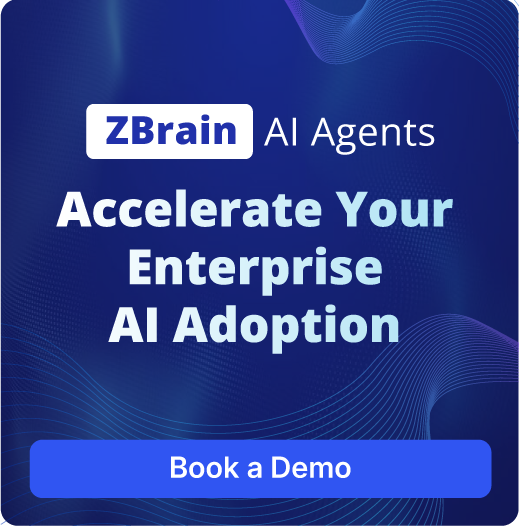Manual evaluation of complex solution designs against evolving architecture standards, security frameworks, and regulatory benchmarks is time-consuming, inconsistent, and error-prone. As organizations expand their digital portfolios, ensuring every design complies with enterprise rules and avoids known defect patterns becomes increasingly challenging. These gaps often lead to rework, compliance failures, and costly downstream remediation.
The Design Compliance Intelligence Agent introduces continuous, automated evaluation throughout the design lifecycle. It ingests structured inputs such as architecture standards, design metadata, and policy control libraries, along with unstructured data like design documentation, decision logs, and review comments. Using advanced AI-driven analysis, the agent cross-references proposed designs with enterprise policies, security frameworks, and regulatory benchmarks. It also leverages historical defect and incident repositories to identify recurring risk patterns or misconfigurations.
For each design, the agent generates actionable compliance assessments highlighting non-conforming elements, suggesting corrective measures, and scoring overall design quality. All analyses, decisions, and revisions are automatically logged in a tamper-proof audit trail to support future traceability and regulatory inspections.
By embedding automated compliance evaluation, defect detection, and audit traceability within the design process, this agent boosts process productivity and reduces late-stage rework. Organizations achieve faster approvals, higher design quality, and sustained adherence to internal and external compliance standards.
Accuracy
TBD
Speed
TBD
Input Data Set
Sample of data set required for Design Compliance Intelligence Agent:
Solution Design Document: Project Fusion
Project ID: PF-2024-007 Author: Sarah Chen, Solution Architect Version: 0.9 (Draft for Review) Date: 2023-10-26
1. Solution Overview
This document outlines the proposed architecture for Project Fusion, which aims to integrate InnovateCorp's internal order management system (OMS) with the new Quantum Dynamics CRM platform. The solution will provide real-time synchronization of customer and order data, enabling a unified view for the sales and support teams.
2. Architecture Components
The proposed solution consists of the following key microservices and components:
- API Gateway: A central entry point for all incoming requests from the Quantum Dynamics CRM. It will handle request routing and initial authentication.
- Customer Sync Service: A Node.js service responsible for transforming and syncing customer data between the two systems.
- Order Sync Service: A Python service that handles the real-time synchronization of order data. This service will directly query the CRM API and push updates to the OMS.
- Data Store: A MongoDB database will be used to temporarily stage and log data during the transformation process for auditing and replay purposes.
3. Data Flow
- Quantum Dynamics CRM triggers a webhook on a "new customer" or "updated order" event.
- The API Gateway receives the webhook payload.
- The request is routed to either the Customer Sync Service or the Order Sync Service.
- The service transforms the data and stores a log in the MongoDB instance.
- The transformed data is then pushed to the internal OMS via its REST API.
4. Security & Authentication
Authentication between the CRM and the API Gateway will be handled via a static API Key transmitted in the request header (X-API-KEY). The internal services will communicate over a private network with no additional authentication required between them.
Deliverable Example
Sample output delivered by the Design Compliance Intelligence Agent:
Solution Design Compliance Report
Project Name: Project Fusion Project ID: PF-2024-007 Document Version: 0.9 Validation Status: FAILED - 3 Issues Found
Summary of Findings
The submitted design proposal for Project Fusion has been automatically evaluated against InnovateCorp's enterprise architecture standards, security policies, and known defect patterns. The review has identified 3 critical non-compliance issues that require remediation before the design can be approved.
Detailed Compliance Issues
| ID | Issue Type | Finding Description | Remediation Action Required |
|---|---|---|---|
| 1 | Enterprise Standard Violation | The design specifies the use of a MongoDB database. Policy EA-DB-01 mandates the use of PostgreSQL for all new transactional and logging data stores to ensure data consistency and leverage existing support infrastructure. | Replace the MongoDB data store with a provisioned PostgreSQL instance. Update the architecture diagram and data flow sections to reflect this change. |
| 2 | Security Policy Violation | The proposal specifies authentication via a static API Key in the request header. Policy SEC-AUTH-003 prohibits the use of static, non-expiring keys for external integrations and requires the use of the OAuth 2.0 Client Credentials Grant Flow. | The authentication mechanism must be updated to use OAuth 2.0. The API Gateway configuration should be updated to validate JWT bearer tokens issued by our central identity provider. |
| 3 | Known Defect Pattern Detected | The proposed direct webhook-to-service data flow matches Defect Pattern DFP-078 (Unthrottled Direct Ingestion). This pattern has been linked to system overloads during peak traffic, as it lacks a mechanism to buffer high-volume inbound requests, leading to cascading failures in downstream services. | Introduce a message queue (e.g., RabbitMQ or AWS SQS) between the API Gateway and the sync services. The gateway should publish incoming payloads to the queue, and the services should consume messages from the queue at a manageable rate. |
Audit Log
| Log ID | Event Description | Design Version | Timestamp | Outcome |
|---|---|---|---|---|
| 8A4F3B1C | Automated Design Scan | 0.9 | 2023-10-26T14:32:11Z | FAILED |

Requirement Change Monitoring Agent
Continuously monitors inbound communications to detect requirement changes, flag risks, and trigger timely team alerts.

Proposal Record Assurance Agent
Creates a unified, immutable proposal record with automated version control and comprehensive audit trails to support compliant approvals.

Proposal Exception Closure Agent
Automates exception validation and closure in revised proposals, ensuring compliance checks and accelerating approval workflows.

Proposal Approval Optimization Agent
Consolidates reviewer feedback, produces intelligent redlines, and ensures proposal revisions align with policy and compliance standards.

Proposal Approval Data Integrity Agent
Ensures accurate, complete, and compliant proposal submissions by validating data, standardizing formats, and reconciling information across all proposal files.lity, and standardizing formats.
Compliant Revision Generation Agent
Generates policy-aligned, context-aware revision options for flagged proposal content to streamline compliant approvals.

